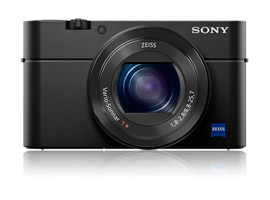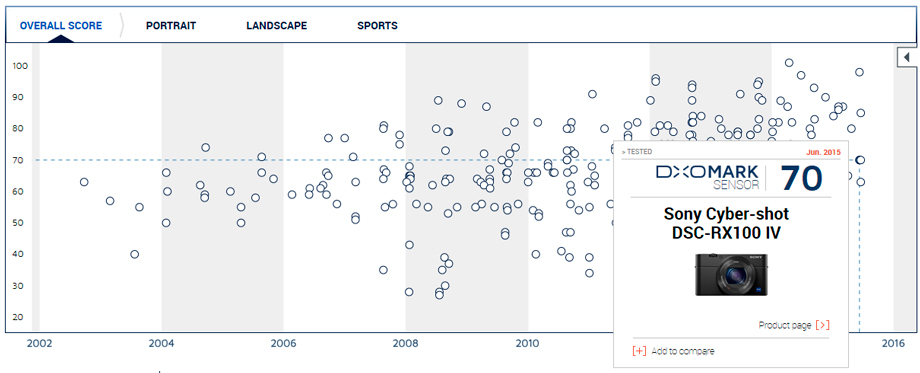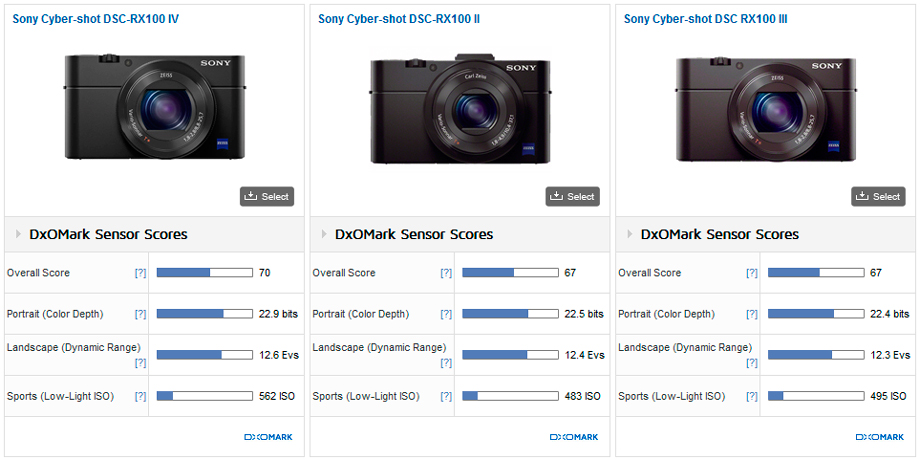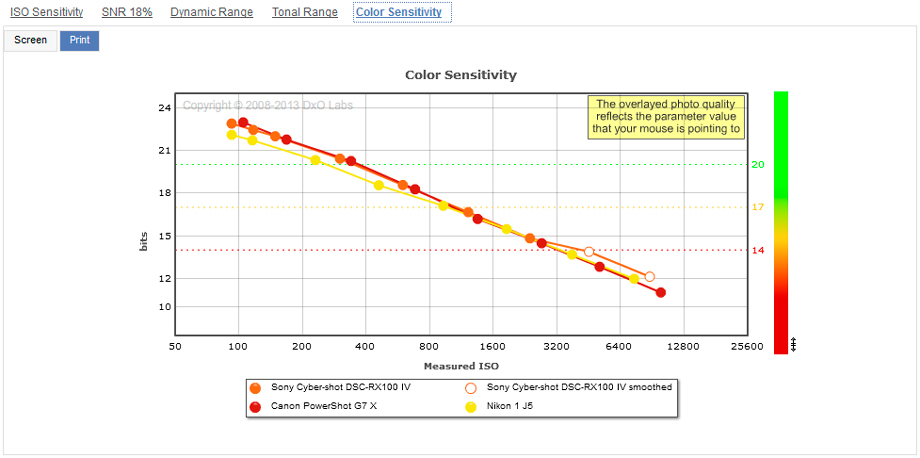Introduction
Specifications and Features
Sony’s RX100 series of premium-quality compacts for enthusiasts has proven hugely popular and garnered worldwide acclaim. The RX100 IV is the fourth iteration, and like the model it replaces, has a stabilized Zeiss Vario Sonnar T* 24-70mm (equivalent) f1.8-2.8 zoom and pop-up EVF, but in place of the 1.44m-dot res screen, it has a new 2.35m-dot OLED.
Although the pixel count remains unchanged and the image sensor utilizes the now commonplace back-side illumination, the RX100 IV uses what Sony is calling a “stacked CMOS” design. This new design incorporates recent advances in the supporting electronics with, for instance, on-chip DRAM and shorter-length circuitry, resulting in a physically closer buffer and allowing such features as high bit-rate (up to 100 Mbps), UHD video (albeit with five-minute max clips), and 960 fps slow-motion recording.
Like its predecessor, the RX100 IV has a 3.0-inch, 1.03m-dot multi-angle (tilting) LCD, and built-in Wi-Fi connectivity with NFC.
The Sony RX100 IV measures 4.0 x 2.4 x 1.6” / 10.2 x 6.1 x 4.1cm and weighs 10.51 oz / 298g, body only. It is available now at around $950 (USD).
Key Specifications
- 20.1-Mpix Exmor RS BSI CMOS sensor
- Zeiss Vario Sonnar T* 24-70mm (equivalent) f1.8-2.8 stabilized zoom
- 2359k-dot OLED EVF
- Bionz X image processor with ISO12800 max sensitivity
- 3.0-inch 1.03m-dot multi-angle LCD
- UHD (3840 pixel) video with S-Log2 Gamma
- Slow-motion video option at 960 fps
- 16 fps continuous still shooting
- Built-in Wi-Fi connectivity with NFC
Excellent sensor scores for a one-inch type sensor
With an overall DxOMark sensor score of 70 points, the Sony RX100 IV sensor performs very well indeed and achieves a high mark for this size sensor. Color sensitivity is a high 22.9 bits, meaning it has relatively low chroma noise at low ISO, and dynamic range at base ISO is a wide 12.6 stops.
It’s not just a good result at base, however: DR is improved at every ISO setting. Even the low-light score of 562 ISO is an improvement of around 0.25 stop over similar pixel count one-inch type BSI sensors.
For a physically small sensor, the new 20-Mpix Exmor RS BSI CMOS chip ranks high, coming in at 116th in our database for sensors of all sizes. Performance ranks alongside recent Micro-Four-Thirds models and even APS-C-equipped DSLR models such as the Canon EOS 7D Mk II and EOS 760D.
Sony Cyber-shot DSC RX100 IV vs. Sony Cyber-shot DSC RX100 II vs. Sony Cyber-shot DSC RX100 III: Small but worthwhile improvement in sensor dynamics
Sony Cyber-shot DSC RX100 IV vs. Canon Powershot G7X vs. Nikon 1 J5
Still, it’s an excellent score, and although the relatively new Nikon 1 J5 isn’t that far behind, the new “stacked” sensor technology brings with it more that just a slight improvement in noise, dynamic range, and low-light performance — there’s the faster frame rates for video and stills. This includes the more useful 30/25/24 fps 4K (UHD) option, as opposed to the Nikon’s rather low 15 fps. Improvements in dynamics are similar between the Nikon and the Sony predecessor, indicating that they most likely share a related sensor.
Conclusion
Although the increase in sensor performance is evolutionary rather than revolutionary, it’s still significant. The new stacked design (and accompanying processor) has allowed some remarkable increases in frame rates both with 4K capture and Full HD, notably the 30/35/24fps at 4K (UHD) and the slow-motion options up to 960fps. There’s also been an increase in still capture rates to 15 fps from 10 fps in the third-generation model. Advances like these are especially promising for future models with small sensors, but if it can be scaled to larger sensors, the potential benefits are equally intriguing.












DXOMARK encourages its readers to share comments on the articles. To read or post comments, Disqus cookies are required. Change your Cookies Preferences and read more about our Comment Policy.